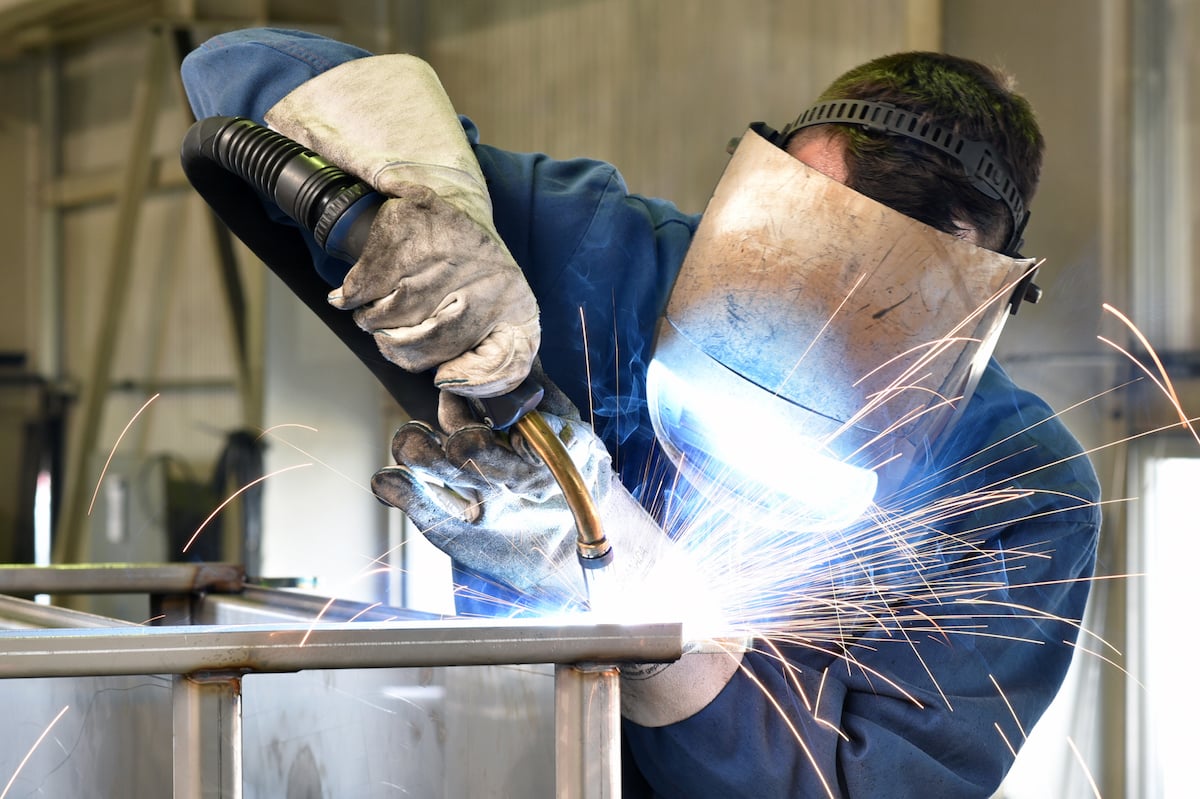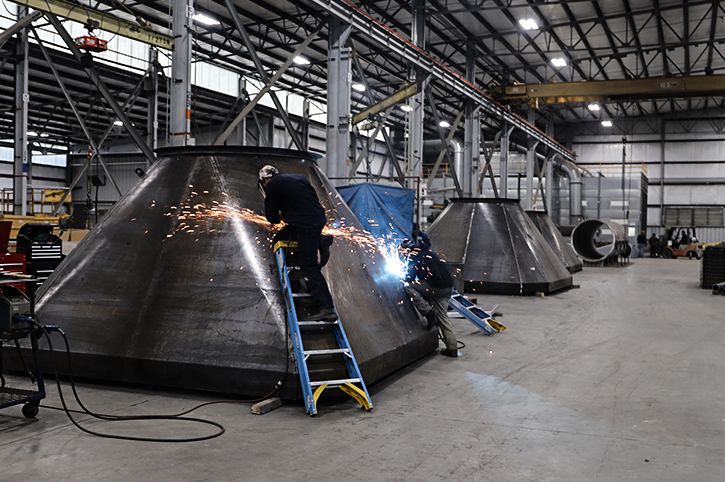Common Welding Repair Work Issues and Exactly How to Address Them Effectively
Welding repair services frequently run into a variety of problems that can jeopardize the integrity of the end product. Typical issues consist of poor penetration, porosity, and imbalance, amongst others. Each defect presents special obstacles that call for specific techniques for resolution. Recognizing these concerns is crucial for welders intending to improve their abilities and outcomes. This discussion will check out these typical welding repair service problems and efficient approaches to resolve them.
Inadequate Penetration
Insufficient infiltration takes place when the weld metal stops working to totally fuse with the base material, leading to weak joints and prospective architectural failings. This concern usually comes from insufficient warmth input, inaccurate electrode angle, or improper welding speed. Welders may come across insufficient infiltration as a result of a mistake of the necessary parameters for a particular material density or type. Additionally, contamination on the base material's surface can prevent effective bonding, intensifying the trouble. To attend to inadequate penetration, welders must assure suitable setups on their devices and preserve a tidy work surface. Routine inspection of welds is advised to determine any kind of shortages early, enabling prompt adjustments and the prevention of compromised structural integrity in bonded assemblies.
Porosity
Porosity is a typical issue in bonded joints that shows up as tiny gas bubbles trapped within the weld metal. This defect can compromise the stability of the weld, causing minimized toughness and prospective failing under stress. Montana Mobile Welding and Repair Welding. Porosity generally occurs from contamination, dampness, or improper welding methods, which permit gases to run away right into the liquified weld swimming pool. To attend to porosity, welders should guarantee appropriate surface area prep work, preserve a tidy functioning setting, and utilize ideal welding specifications. In addition, choosing the appropriate filler material and protecting gas can alleviate gas entrapment. Normal examination and testing of welds can help determine porosity early, ensuring prompt rehabilitative activities are taken, thus maintaining the quality and dependability of the bonded framework
Imbalance
Misalignment in welding can arise from various factors, consisting of improper configuration and thermal development. Recognizing the source is important for effective resolution. Several adjustment strategies are readily available to realign elements and ensure architectural honesty.
Reasons for Misalignment
Welding misalignment frequently stems from a selection of underlying concerns that can endanger architectural honesty. One primary cause is inappropriate fit-up of parts before welding, which can cause voids and irregular surface areas. Variants in thermal development during the welding procedure can additionally result in distortion, specifically if the products being joined have various coefficients of expansion. Additionally, poor fixturing and securing may fall short to hold elements firmly in position, bring about movement throughout welding. Badly maintained tools, including welding devices and tools, may present inconsistencies in the weld bead, further adding to misalignment. Operator error, stemming from not enough training or experience, can also play a significant role in creating misaligned welds.

Correction Strategies Offered
Dealing with imbalance effectively calls for a mix of corrective techniques customized to the particular problems handy. One common method is making use of components or jigs to hold parts in the proper placement during welding, ensuring constant placement. Additionally, pre-heating the products can help in reducing distortion and improve fit-up. For significant imbalance, mechanical realignment methods, such as using hydraulic jacks or clamps, can be utilized to fix the setting before welding. Post-weld warmth therapy might also be needed to eliminate stress and anxieties brought on by misalignment. Lastly, careful evaluation and change throughout the configuration phase can avoid misalignment concerns from ending up being significant issues, promoting a smoother welding procedure and boosting general architectural integrity.
Distortion
Distortion is an usual obstacle in welding that can arise from different aspects, including irregular heating and air conditioning. Recognizing the root causes of distortion is crucial for carrying out effective avoidance methods. Addressing this problem not just boosts architectural stability but additionally boosts the overall high quality of the weld.
Sources of Distortion
When based on the intense warmth of welding, products often undergo modifications that can cause distortion. This sensation largely develops from thermal growth and tightening throughout the welding process. As the weld area warms up, the material expands; upon cooling, it acquires, which can produce inner anxieties. Furthermore, unequal heating across a workpiece can worsen these tensions, resulting in bending or bending. The sort of material also plays a substantial function; metals with differing thermal conductivity and coefficients of development may react in a different way, causing unforeseeable distortions. Bad joint layout and insufficient fixturing can add to misalignment during welding, boosting the possibility of distortion. Recognizing these causes is essential for effective welding repair and avoidance approaches.
Prevention Techniques
Effective prevention techniques for distortion during welding emphasis on controlling warm input and making sure correct joint design. Maintaining a consistent warmth input assists to reduce thermal expansion and tightening, which can bring about distortion. Utilizing methods such as pre-heating the work surface can likewise decrease the temperature slope, promoting consistent home heating. Furthermore, picking ideal joint designs, such as T-joints or lap joints, can improve stability and reduce anxiety concentrations. Applying correct fixturing to protect the workpieces in place even more aids in maintaining placement during the welding procedure. Ultimately, staggered welding sequences can distribute warmth much more equally, avoiding local distortion. By using these techniques, welders can greatly decrease the chance of distortion and improve the total quality of their welds.
Cracking
Breaking is a typical problem come across in welding repair services, typically arising from different factors such as incorrect cooling prices, material selection, or inadequate joint prep work. The incident of cracks can significantly endanger the honesty of the weld, resulting in potential failures during operation. To resolve this problem, welders need to initially analyze the root triggers, ensuring that materials are suitable and suitably selected for the details application. Furthermore, controlling the cooling rate during the welding process is important; quick air conditioning can induce tension see this site and cause breaking. Appropriate joint design and prep work likewise add to lessening the danger. Applying these techniques can improve weld quality and durability, eventually lowering the possibility of fracturing in ended up weldments.

Incomplete Blend
A substantial problem in welding fixings is insufficient combination, which takes place when the weld metal does not appropriately bond with the base material or previous weld passes - Montana Mobile Welding and Repair Welding. This defect can result in weaknesses in the joint, possibly endangering the honesty of the bonded framework. Factors adding to insufficient combination include inadequate heat input, incorrect welding method, and contamination of the surface areas being signed up with. To address this issue successfully, welders should guarantee appropriate pre-weld cleansing and surface preparation, along with readjust their welding specifications to attain appropriate infiltration and blend. Normal inspection throughout the welding process can likewise help identify her explanation insufficient fusion early, permitting for timely corrective procedures to boost the total quality of the weld
Overheating
While welding repair work can boost architectural honesty, overheating presents a substantial difficulty that can cause product deterioration. Excessive heat during welding can change the mechanical residential properties of metals, resulting in decreased stamina, boosted brittleness, and warping. This sensation is especially vital in high-stress applications where structural integrity is paramount. Recognizing overheating can involve aesthetic evaluations for staining or distortion, along with checking temperature level during the welding procedure. To minimize the threats related to getting too hot, welders need to use appropriate techniques, such as managing warmth input, changing traveling speed, and utilizing appropriate filler materials. In addition, executing pre- and post-weld heat treatments can assist restore product residential properties and boost the total top quality of the fixing, making sure long-term performance and safety and security.
Regularly Asked Concerns
What Are the Common Signs of a Welding Issue?

How Can I Examine My Welds for High quality?
To evaluate welds for quality, one can make use of aesthetic evaluations, ultrasonic testing, and radiographic techniques. Each technique guarantees structural honesty, recognizes flaws, and verifies adherence to defined criteria, ultimately enhancing the integrity of the welded joints.
What Safety Preventative Measures Should I Take While Welding?
When welding, one ought to prioritize safety and security by using suitable individual safety tools, ensuring appropriate ventilation, protecting flammable materials away, maintaining a tidy work area, and being mindful of surroundings to avoid injuries and crashes.
Can I Repair a Weld Without Renovating the Entire Joint?
Repairing a weld without remodeling the whole joint is possible, relying on the damages (Montana Mobile Welding and Repair). Techniques such as grinding, adding filler product, or using a welding procedure can properly attend to particular problems while preserving the surrounding framework
What Equipment Are Necessary for Efficient Welding Repair Works?
Necessary devices for reliable welding repair work consist of a welding machine, cord brush, mill, protective equipment, clamps, and filler materials. Each device plays a vital function in this link ensuring top quality and security during the repair service procedure. Porosity commonly emerges from contamination, moisture, or inappropriate welding methods, which allow gases to get away right into the molten weld swimming pool. Badly maintained equipment, consisting of welding makers and devices, might present inconsistencies in the weld bead, more contributing to imbalance. When subjected to the intense warmth of welding, materials commonly undergo changes that can lead to distortion. Breaking is a common issue encountered in welding fixings, commonly resulting from different factors such as incorrect air conditioning rates, material selection, or inadequate joint preparation. A considerable concern in welding repair work is incomplete combination, which happens when the weld metal does not appropriately bond with the base product or previous weld passes.